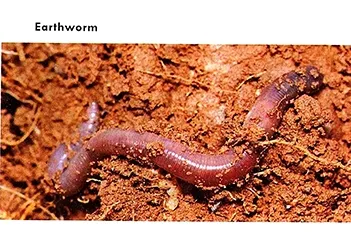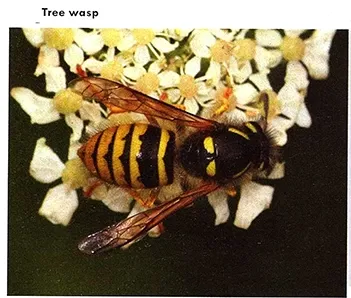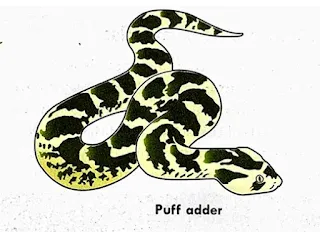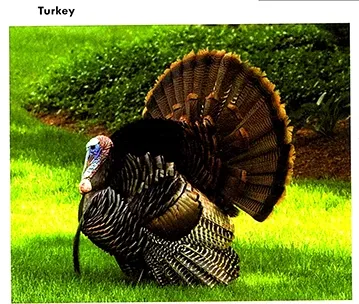Biodiversity and classification of Living Organisms: Key Facts and Insights
This blog post provides readers with the following objectives. The reader will be able to:
o State the importance of classification of living organism.
o Outline the general characteristics of the five kingdoms of living things.
o Identify and classify organisms into their respective kingdoms.
o List the characteristics of major Phyla of Kingdoms Protoctista and Fungi.
o Describe the characteristics of the major divisions and classes of Kingdom Plantae
o Outline the major phyla and classes of Kingdom Animalia.
o Describe the characteristics of the major phyla and classes of Kingdom Animalia.
o Describe the characteristics of the major orders of Class Insecta.
o Construct identification keys using characteristics of organisms.
Classification of Living Things
Biological classification is the sorting and grouping of living things according to their common characteristics. Biologists place organisms into groups known as taxa (singular: taxon), based on their characteristics. This branch of biology is referred to as taxonomy. Taxonomy is the study of classification of organism.
Early Taxonomist
Ø Aristotle (Greece, 384–322BC) a Greek philosopher was the first to classify organisms. His system of classification was based on mainly appearances. He classified plants as herbs, trees and shrubs based on their size. He classified animals according to where they lived and structural similarities. Aristotle also classified animals whether they have red blood or not. Aristotle’s classification was used for nearly 2,000 years.
Ø John Ray (England, 1627–1705) He classified plants according to similarities and differences. He was the first biologist to introduce the concept of species. He defined species as a group of similar individuals that can interbreed and produce fertile offspring.
Ø Carolus Linnaeus (1707-1778) a Swedish botanist. Linnaeus system of classification was widely accepted and is still the basic framework for all taxonomy. His system of classification is called Binomial system. He used two Latin words to describe each species of organism (known to as scientific name). The first name shows the genus, whilst the second name shows the species which the organism belongs. The genus name starts with capital letter and species starts with a small letter. Both names must be underlined separately when hand written or should be in italic when typed.
Therefore; binomial nomenclature is a system of
naming organism using two-part name.
Classification of
organisms is hierarchical. There are seven main ranks (taxa) into which
organisms are placed: Kingdom, Phylum/Division, Class, Order, Family, Genus and Species.
Classification of Some Living Organisms
|
Taxon |
Domestic Dog |
Human |
Maize |
|
Kingdom |
Animalia |
Animalia |
Plantae |
|
Phylum/Division |
Chordata |
Chordata |
Angiospermophyta |
|
Class |
Mammalia |
Mammalia |
Monocotyledoneae |
|
Order |
Carnivora |
Primates |
Graminales |
|
Family |
Canidae |
Hominidae |
Graminaceae |
|
Genus |
Canis |
Homo |
Zea |
|
Species |
Familaris |
Sapien |
May |
Importance of Classification
The Five Kingdom and Hierarchy of Classification
Classification puts all organisms into five groups:
Kingdom: Prokaryotae or Monera
Examples: Bacteria, Blue-green algae (cyanobacteria), and Spirochetes
General Characteristics of Prokaryotes
1. unicellular organisms2. no definite nucleus
3. no nuclear membrane
4. lack membrane-bound organelles
5. photosynthetic, chemosynthetic, or feed by absorption
6. the cell is usually surrounded by capsule or mucilage
7. reproduction is mainly by binary fission (asexual reproduction)
| False Colour Electron micrograph of a colony of Bacillus cereus |
Kingdom: Protoctista
General Characteristics
o mostly unicellular but few are multicellular
o membrane bound organelles
o absence of tissues or organs
o some are photoautotrophs, others ingest food (heterotrophs) or (saprotrophs)
There are several phyla under kingdom protoctista, which includes the following;
Phylum: Chlorophyta (Green algae)
Examples: Chlamydomonas, Volvox, Spirogyra
Characteristics of Chlorophytes
o live in either fresh water, marine or damp soil
o single-celled, colonial, filamentous, or multicellular
o the cell wall contains cellulose
o presence of chlorophylls and are photosynthetic
o food is store as starch inside the chloroplast
Phylum: Rhizopoda
Examples: Amoeba proteus, Entamoeba histolytica
Characteristics of Rhizopoda
Phylum: Rhodophyta (Red algae)
Characteristics of Rhodophytes
o mostly multicellular
o red color is due to red photosynthetic pigment
o the pigments are able to absorb blue and green light
Phylum: Phaeophyta (Brown algae)
Examples: Fucus, Sargassam, Laminaria
Characteristics of Phaeophytes
o brown algae are photosynthetic
o brown color is due to carotenoid pigments
Phylum: Ciliophora (Ciliates)
Example: Paramecium, Vorticella, Didinium
Characteristics of Ciliophorans
o unicellular organisms
o the pellicle is covered with numerous of cilia
o presence of large macronucleus and a smaller micronucleus
Phylum: Apicomplexa (Sporozoans)
Examples: Plasmodium,
Toxoplasma
Characteristics of Sporozoans
o Unicellular
o non-motile
o mainly parasitic
o reproduction is by sexual and asexual
o the apex of the cell contains a complex organelles used to penetrate host cell
Phylum: Euglenophyta (Euglenozoans)
Examples: Euglena
Characteristics of Euglenophytes
o they are Unicellular organismsPhylum: Oomycota (Slime mould)
Characteristics of Oomycotes
Phylum: Zoomastigophora (Flagellates)
Examples: Trypanosoma,
Trichomonas, Giardia
Characteristics of Zoomastigophora
o Mode of feeding is heterotrophic; ingesting and absorbing food
o their reproduction is asexual
Kingdom: Fungi
General Characteristics of Fungi
The phyla of kingdom fungi include:
Phylum: Zygomycota (Zygomycetes)
Examples: Rhizopus, Mucor
Characteristics of of Zygomycetes
| Bread mould |
Phylum: Ascomycota (Sac fungi)
Examples: Yeasts, Molds, Morels, Truffles and many plant pathogens
Characteristics of Ascomycetes
o the body consists of septate hyphaePhylum: Basidiomycota (Club Fungi)
Examples: Mushrooms, Toadstools, Bracket Fungi, Shelf Fungi, Puffballs,
Rusts, Smuts
Characteristics of of Basidiomycetes
o mostly terrestrial
o saprophytic or parasitic
Kingdom: Plantae
General Characteristics
o found in damp terrestrial habitats or in fresh water
o no vascular tissues
o absence of true roots, stems, or leaves
o rhizoids are root-like structures that absorb water and nutrients
o restricted to moist areas because the flagellated sperms require water to swim to the egg
There are two classes under division bryophytes:
Class Musci (Mosses)
Example: Funaria and Sphagnum
Characteristics of Mosses
o spirally arranged leaf-like structures
o the sporophyte consists of a foot, a stalk and a capsule containing spores
Moss plants | |
Class Hepaticae (Liverworts)
Example: Marchantia, Pellia
Characteristics of Liverworts
o the gametophyte is thalloid (flattened)
o terrestrial plants with vascular tissues
o possesses true roots, stems and leaves
Division: Lycopodiophyta
Examples: Club mosses, Spike mosses, Quillwort
|
Division: Coniferophyta (Conifers)
Examples: pine, cedar and redwood trees. Conifers are the largest group of gymnosperms.
o non-flowering, non-fruit, vascular plants with true roots, stem and leaves
o naked seeds are produced in cones
Division: Cycadophyta (Cycads)
o cone-bearing palm-like plants
o long compound leaves clustered at the apex of short unbranched stem
Division: Angiospermophyta
o the largest group of plants
o the seeds are covered by a fruit
1. Class: Monocotyledonae (Monocotyledon)
E.g., Cereals (maize, barley, oats, rice or wheat), grasses, onion, palms, plantain, bamboo etc.
E.g., Silk cotton, pepper, tomato, mango, orange, sunflower, flamboyant, yam etc.
Characteristics of Monocotyledon and Dicotyledon
|
Dicotyledon |
Monocotyledon |
|
Vascular bundles have cambium |
Vascular bundles lack cambium |
|
Flower parts in multiples of four or five |
Flower parts in multiples of three |
|
Net-veined leaves |
Parallel-veined leaves |
|
Vascular bundles are arranged in rings |
Vascular bundles are scattered |
|
Two cotyledons (seed leaves) |
One cotyledon |
|
Absence of leaf sheath |
Presence of leaf sheath |
|
Possess tap root system |
Possess fibrous root system |
|
Vascular bundles are few in numbers |
Vascular bundles numerous |
|
Leaves are usually narrow, thin and long |
Leaves are broad, simple or compound |
Kingdom: Animalia
o true nucleus (eukaryotic)
o Heterotroph
o nervous system for coordination
Phylum: Porifera (Sponges)
Examples: Leucosolenia, Euplectella
Characteristics of Porifera
· asymmetrical
· the body is supported by spicules
· diploblastic (ectoderm and endoderm)
· absence of mouth, digestive cavity and anus
· absence of nervous system and sense organs
Phylum Cnidaria (Cnidarians or Coelenterates)
Examples: Hydra, Jellyfishes, Corals, Sea anemones, Obelia.
Characteristics of Cnidarians
□ radial symmetry
□ diploblastic (two tissue layers)
□ hydrostatic skeleton
□ they possess a gut with a single opening
□ two tissue layers are separated by mesoglea (non-living gelatinous material)
□ presence of long structures called tentacles used to capture prey
Phylum: Platyhelminthes (Flatworms)
Examples: Planaria, Tapeworms
Characteristics of Platyhelminthes
o bilaterally symmetrical
o triploblastic i.e. having three germ layers
o body is dorso-ventrally flattened
o body has a definite anterior end with a concentration of nerve cells
o acoelomate; contains no internal cavity
o excretory organ (protonephridia with flame cells)
o circulatory and respiratory system are absent
Classes of Platyhelminthes: Turbellaria, Trematoda, and Cestoda.
Example: Planaria
o absence of sucker
Examples: Liver fluke (Fasciola hepatica), Blood Fluke (Schistosoma)
Class: Cestoda (Tapeworms)
Examples: Taenia saginatus, Taenia solium
o no digestive system but absorbs digested nutrients from host
o no external cilia
o tick cuticle to withstand host digestive enzymes
o body consists of a head (scolex) with suckers and hooks for attachment to host
o presence of reproductive segments called proglottids behind the scolex
Phylum: Nematoda (Roundworms)
Examples; Ascaris, Trichinella, Dracunculus, Hookworms and Pinworms
Characteristics of Nematodes
Phylum: Annelida (Annelid worms or segmented worms)
Examples: Nereis (rag worm), Arenicola (lugworm)
Class: Hirudinea (Leeches)
Example: Hirudo (Medical leech)
o no distinct head, no chaetae or parapodia
o have no clitellum
Class: Gastropoda
Examples: Snails, periwinkles, abalone, slugs
Characteristics of Gastropods
o both salt and fresh water and on land
o the largest group of mollusks
Class: Cephalopoda (the “head-foots”)
Examples: Nautilus, Squid, Octopus
Characteristics of Cephalopods
o all marine
o large head with conspicuous eyes
Class: Pelecypoda or Bivalvia
Examples: Clams, Oysters, Scallops, Mussels
Characteristics of Pelecypods
o the shell is made up of two equal valves
o have no radula
{nextPage}
Phylum: Arthropoda (Arthropods)
The largest phylum in the animal kingdom
Characteristics of Arthropods
Classes of arthropods include;
Class: Arachnida
Examples: Spiders, Scorpions, Mites, Ticks
Characteristics of Arachnids
o the body is fused into a cephalothorax or prosoma and abdomen or opisthosoma
o the cephalothorax bears four pairs of walking legs
o only simple eyes
o absence of antennae
o presence of pedipalps; second pair of appendages, used for feeding
o respiration occurs through book lungs
Class: Diplopoda (Millipedes)
Characteristics of Diplopods
o elongated cylindrical body with numerous segments
o a pair of antennae and 3 pairs of mouthparts
o absence of poisonous jaws
o two pairs of legs on each segment
Class: Chilopoda (Centipedes)
Characteristics of Chilopods
o fast-moving carnivores
o body is dorso-ventrally flattened
o two body divisions; a distinct head and elongated trunk
o head bears one pair of poison jaws and a pair antenna
Class: Crustacea (Crustaceans)
Examples: lobsters, crayfish, and crabs), prawn, copepods and krill, barnacles
Characteristics of Crustaceans
o the head and thorax are fused into a cephalothorax
o possess pair of compound eyes
o two pairs of antennae
o five pairs of legs on the cephalothorax
Class: Insecta (Insects)
Characteristics of Insects
o three segmented bodies; the head, thorax, and abdomen
o the thorax is divided into three segments; prothorax, mesothorax and metathorax
o three pairs of legs and many have one or two pairs of wings
o presence a pair of antennae
o both simple and compound eyes
{nextPage}
Some orders of class Insecta are
Order: Coleoptera
Examples: Beetles and Weevils
o chewing mouthparts (located at the tip of a beak or snout)
o have a hard, dense exoskeleton that covers and protects the body
Order: Diptera
Examples: Mosquito, Housefly, Tsetsefly
o piercing or sucking mouthparts
o one pair membranous forewing
Order: Hemiptera (bugs)
Examples: Bedbugs, Cotton Stainer, Aphids, Whiteflies
o piercing and sucking mouthparts
o hindwings are membraneous
Order: Isoptera
Examples: Termites
o antennae beaded and straight
Order: Hymenoptera
Examples: Ants, Bees and Wasps
o narrow waist between thorax and abdomen
o forewings are larger than hind wings
Order: Lepidoptera
Examples: Butterfly and Moth
o body and wings are covered with powdery scales
o maxillae modified into long proboscis for sucking liquids
Order: Odonata
Examples: Dragonflies and Damselflies
o large compound eyes
o very elongate thin thorax and abdomen
Order: Dictyoptera
Examples: Cockroaches, Praying mantis
o biting and chewing mouthparts
o forewings are tough (tegmina) and covers membranous hind wings
o forewings are elongated and thickened
o pronotum "collar" of thorax
{nextPage}
Phylum: Echinodermata (Echinoderms)
Examples: Sea stars (starfishes), Sea urchins, Sea cucumbers
Characteristics of Echinoderms
For more detailed information on echinoderms, you can explore these resources: Echinodermata: An Overview
Classes of echinoderms include;
Class: Stelleroidea or Asteroidea (Sea
Stars)
Examples: Starfishes, Brittle stars
Characteristics of Stelleroidea
o dorso-ventrally flattened
Class: Echinoidea (Sea Urchins, Sand
Dollars)
Characteristics of Echinoidea
o have globular, heart shaped or flattened body with long spines
o lack arms
Phylum: Chordata (Chordates)
General characteristics of Chordates
Classes of Chordates include;
Class: Chondrichthyes (Cartilaginous Fish)
Examples: Sharks, Dogfishes, Skates, Rays
Characteristics of Chondrichthyes
o fertilization is internal
o absence of operculum
o mouth is ventral
o tail is heterocercal
o endoskeleton composed of cartilage
o body is covered with small tooth like or placoid scales
o absence a swim bladder but have oil-storing capacity for buoyancy
o gills are covered by opercula
o mouth is terminal
o tail is homocercal
o a swim bladder used for buoyancy
o fins supported by rays
o skin is covered by overlapping scales
o both aquatic and terrestrial
o thin loose, moist skin with no scales
o mostly tetrapods (four limbs)
o lungs and moist skin are used for gaseous exchange
o reproduce in water because sperm require water to swim
o larva is aquatic but adult adopts an amphibious lifestyle
o larvae (tadpoles) use gills for respiration
{nextPage}
Class: Reptilia (Reptiles)
E.g.: Lizards, Snakes, Turtles, Crocodilians
Characteristics of Reptiles
o homodont dentition
o no external ear and possess bony skeleton
o body covered with dry horny scales
o respiration is through lungs
o fertilization is internal
o lay eggs with leathery shells
Class: Aves (Birds)
E.g.: Duck, Vulture, Chicken (Domestic fowl), Weaver bird
Characteristics of Birds
o presences of feathers
o presence of strong beak
o enlarged breastbone for attachment of flight muscles
o the eggs have calcareous shells
o absent of teeth and jaws
o horny scales on legs
Class: Mammalia (Mammals)
E.g.: Human, Cat, Cow, Whale, bat, Dolphin
Characteristics of Mammals
o skin is covered with fur or hair
Subclass: Prototheria/Monotremata (Monotremes)
E.g: Duck billed platypus, Spiny anteater
o lay eggs which the female incubates
Subclass: Metatheria/Marsupiala (Marsupials)
E.g.: Kangaroos, Koalas, Opossums
o the young are born immature and crawl into the mother's marsupium (pouch)
Subclass: Eutheria (True mammals or Placental Mammals)
E.g.: human, Goats, Sheep, Horses, Pigs, Cats, Dogs
o well-developed placenta for nutrient and waste exchange
{nextPage}
Identifying organisms using biological keys
This post describes the diversity of living things and shows how they can be classified according to unique characteristics. These characteristics can be used to help to identify organisms. For example, if we find an organism with jointed legs identify it as an arthropod. If it has three body divisions, we know it is an insect and if it has only one pair of wings we know it belongs to the order Diptera. In this way we can narrow down the species it could be until we eventually fully identify the organism.
Types of keys
Keys are used for quick and accurate identification of organisms. Fig 1 below shows two types of keys: a branching or dichotomous key and a numbered key, from which the organisms in Fig. 2 can be identified.
 | |
|
Constructing identification keys
In order to construct a dichotomous key, the organisms are separated into successive pairs of groups on the basis of clearly observable external features. The ultimate identification is based on distinguishing features that are possessed by only one organism. Dichotomous keys take up space, particularly if many organisms are involved. In this case, a numbered key is better.
Use this key to identify the organisms showing below
Click Here for WAEC/ SSCE/ WASSCE/ NOVDEC BIOLGY PAST QUESTIONS AND ANSWERS on Diversity of Living Things
Related Post on Biology Topics
- Elective Biology Topics for Senior High Schools (SHS 1, 2 & 3)
- Genetic Variation
- CLASSCAL GENETICS NOTES FOR SENIOR HIGH SCHOOLS
- REPTILES (Agama Lizard)
- AMPHIBIANS (TOADS AND FROGS)
- Structure and life Processes of Fish (Tilapia)
- Structure and Life Cycle of Mosquito
- Structure and Mode of life of Honey Bee (Apis mellifera)
- TERMITES (Macrotermes bellicosus)
- Structure and the Life Cycle of Red Cotton Stainer (Cotton Bug)
- External Features and Life Cycle of Grasshopper.
- Structure, Life Cycle and Economic Importance of Weevil/ Beetle
- Structure and the Life Processes of Butterfly
- Structure Life Cycle and Other Life Processes of Cockroach
- Structure, Characteristic Features and Life Cycle of a Fern Plant
- Structure, Characteristics and Life Cycle of Moss Plant
- Structure and Life Processes of Rhizopus (Bread Mold)
- The Structure and The Life Processes of Spirogyra
- The Structure and The Life Processes of Euglena

.webp)

















.webp)



.webp)




